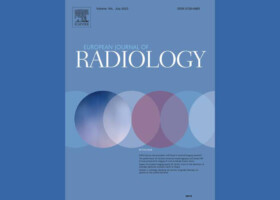
Authors:
Adam W Anz, Erin P Lucas, Eric K Fitzcharles, Rachel K Surowiec, Peter J Millett, Charles P Ho
Abstract:
Evaluation of the rotator cuff has improved with advancements in conventional MRI technology. Clinicians can gain insight into the morphologic status of tendon to attachment with qualitative interpretation of images. However, the sensitivity and specificity of MRI to determine pathology has proven variable, especially in the presence of tendonopathy and partial rotator cuff tears and the evaluation of signal intensity alone may contribute to lack of reliability. Furthermore, diagnosis and monitoring of post-repair tendon health with MRI also remains largely subjective.
The degenerative process of rotator cuff tendons involves alterations in collagen structure and biochemical composition. Quantitative MRI has demonstrated to be sensitive to biochemical changes in cartilage, recently in cartilage of the glenohumeral joint, and could potentially be used to detect subtle changes in the biochemical composition of tendons associated with tendon degeneration. Initial studies have shown promise for detecting tendon pathology using quantitative MRI. Pilot clinical application reported anatomic variation in T2 values within the Achilles tendon-muscle unit in asymptomatic volunteers, and differences in T2 values between asymptomatic volunteers and those with chronic Achilles tendinopathy. To our knowledge, there are no published studies which analyze the rotator cuff tendons using quantitative MRI mapping. Quantifiable, objective data on the health status of the rotator cuff would be exceptionally useful in a clinical setting for the non-invasive diagnosis of injury and tracking post-surgical treatment response. To date, T2 mapping is the most commonly used mapping sequence within clinical practice, thus evaluation of T2 mapping for diagnosing rotator cuff pathology has high clinical relevance and potential for implementation.
Before applying T2 mapping scans to the clinical population, it is essential to appreciate normative T2 values and the distribution of these values within the rotator cuff tendons to serve as a baseline, similar to previous normative studies of the tendons utilizing classic MRI technology. Therefore, the objective of this prospective study was evaluate verified asymptomatic volunteers using T2 mapping in order to establish a quantitative MRI protocol using T2 mapping for this purpose and to determine normative T2 values in asymptomatic tendons across age groups. We hypothesized that a normal range and pattern of T2 values exists which correlates to the anatomic structure of the muscle-tendon unit. Additionally, we hypothesized that due to compositional changes which occur during aging, differences in T2 values would be observed across age groups. The results of this study will establish normative, asymptomatic T2 values for the supraspinatus tendon according to age, which can later be used as a reference and baseline for comparison for T2 mapping of damaged rotator cuff tendons and mapping of healing rotator cuff tendons after repair using these clinically relevant subregions.
For the complete study: MRI T2 mapping of the asymptomatic supraspinatus tendon by age and imaging plane using clinically relevant subregions
